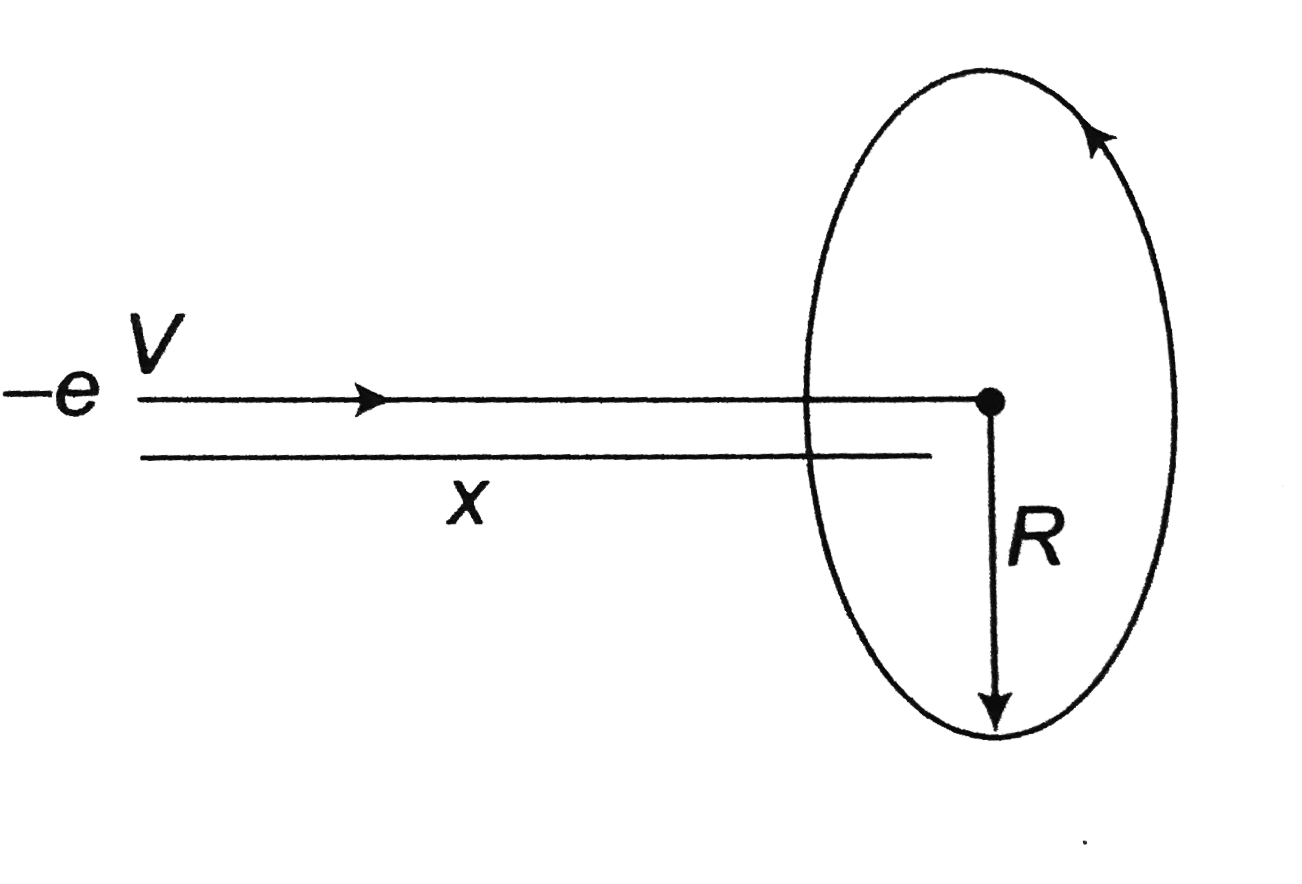An electron moves in a uniform magnetic field and follows a spiral path as shown in Fig. 1.30. State the following statements as True or False.
a. Angular velocity of the electron remains constant.
b. Magnitude of velocity of the electron decreases continuously.
c. Net force on the particle is always perpendicular to its direction of motion.
d. Magnitude of net force on the electron decreases continuously.

(a) True, (b) True, (c) False, (d) True,
Periode of revolution of a charged particle moving in a uniform
magnetic field is given by T=2πmqB.
This period T does not depend upon speed of the particle. In this
particular question, the moving particle is an electron. Hence, its
mass and charge (q) both are constant. Magnetic field is also uni-
form. Hence, its period of revolution remains constant. It means
electron moves with a constant angular velocity. Hence (a) is
correct.
In previous question we have already discussed that if a charged
particle experiences a resisting motion then it fol-
lows a decreasing radius spiral path. In this question, electron
is moving along a spiral path of decreasing radius. It means its
speed is decreasing continuously. Hence (b) is correct.
Since the speed of the electron is continuously decreasing. there-
fore, it is experiencing a tangential retardation. It is possible only
when the component of resultant force opposite to the direction
of motion of electron has non-zero value. It means, net force on
electron cannot be perpendicular to its direction of motion. Hence
(c) is wrong.
Since speed of the electron is decreasing continuously, therefore,
the force exerted by the magnetic field (F=qvB) is also decreas-
ing continuously. Hence, magnitude of net force acting on the
electron is decreasing continuously.
Hence (d) is correct.
Topper's Solved these Questions
- MAGNETIC FIELD AND MAGNETIC FORCESBOOK - CENGAGE PHYSICS ENGLISHCHAPTER - MAGNETIC FIELD AND MAGNETIC FORCESEXERCISE - Exercise 1.2
13 Videos
- MAGNETIC FIELD AND MAGNETIC FORCESBOOK - CENGAGE PHYSICS ENGLISHCHAPTER - MAGNETIC FIELD AND MAGNETIC FORCESEXERCISE - Exercise1.3
14 Videos
- MAGNETIC FIELD AND MAGNETIC FORCESBOOK - CENGAGE PHYSICS ENGLISHCHAPTER - MAGNETIC FIELD AND MAGNETIC FORCESEXERCISE - Solved Example
25 Videos
- INDUCTANCEBOOK - CENGAGE PHYSICS ENGLISHCHAPTER - INDUCTANCEEXERCISE - Concept Based
8 Videos
- MISCELLANEOUS VOLUME 3BOOK - CENGAGE PHYSICS ENGLISHCHAPTER - MISCELLANEOUS VOLUME 3EXERCISE - True and False
3 Videos
Similar Questions
Knowledge Check
A moving electron enters a uniform and perpendicular magnetic field. Inside the magnetic field, the electron travels along :
Aa straight lineBa parabolaCa circleDa hyperbola
A beam of electrons moving with a momentum p enters a uniform magnetic field of flux density B perpendicular to its motion. Which of the following statement(s) is (are) true?
View SolutionA beam of electrons moving with a momentum p enters a uniform magnetic field of flux density B perpendicular to its motion. Which of the following statement(s) is (are) true?
View SolutionAn electron enters a magnetic field along perpendicular direction. Following quantity will remain constant -
View SolutionA charged particle enters a region which offers a resistance against its motion and a uniform mangetic field exists in the region. The particle traces a spiral path as shown in Fig. 1.29. State the following statements as True or False.
(a) Component of magnetic field in the plane of spiral is zero.
(b) Particle enters the region at Q.
(c) If magnetic field is outwards, then the particle is positively charged.
(d) All of these.

View SolutionAn electron enters an electric field with its velocity in the direction of the electric lines of force. Then
View SolutionA moving electron enters a uniform and perpendicular magnetic field. Inside the magnetic field, the electron travels along :
View SolutionAn electron moving with a velocity v along the positive x-axis approaches a circular current carrying loop as shown in the fig. the magnitude of magnetic force on electron at this instant is

View Solution
